By Rick VanSickle
The busiest weekend so far for harvesting grapes in Niagara this fall saw the full spectrum of wineries picking, sorting and crushing under bright sunshine and cool temperatures.
Wines In Niagara took a jaunt through Vineland and Beamsville on Saturday where crews were busy bringing in as many grapes as they could before the rain Sunday. It was a glorious Saturday and I caught winemakers and their crews harvesting and processing at Megalomaniac, Vineland Estates and Malivoire, while a trip up the escarpment to Domaine Queylus found winemakers Thomas Bachelder and Kelly Mason waiting for the first fruit of the day to arrive.
Here are a few photos from Saturday (including shot of hand harvesting Pinot Noir at Megalomaniac, top photo).
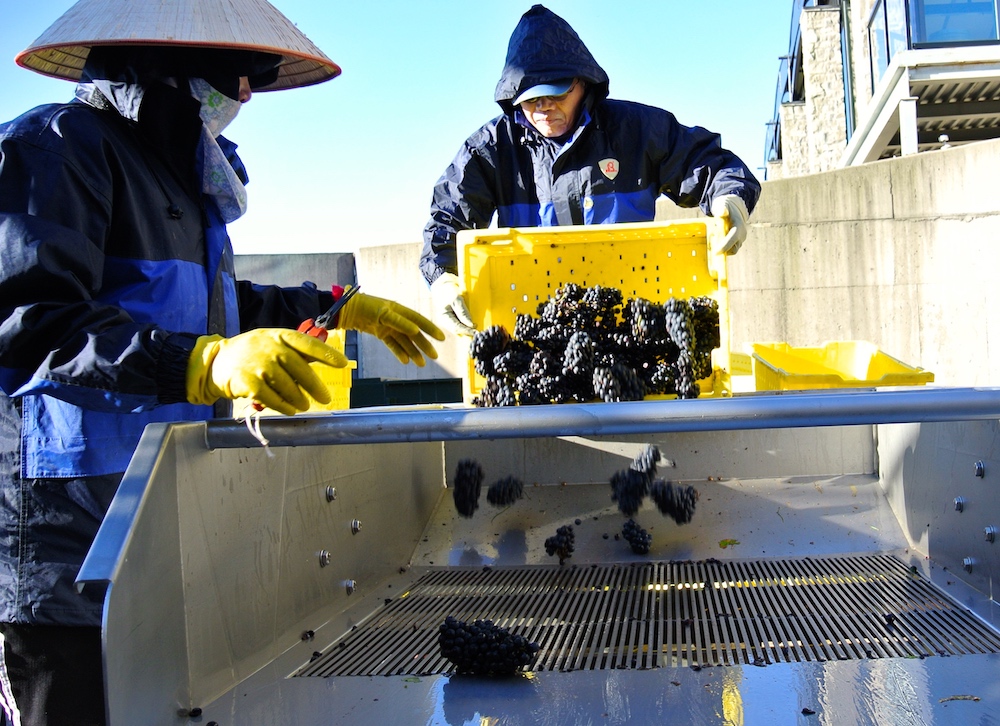
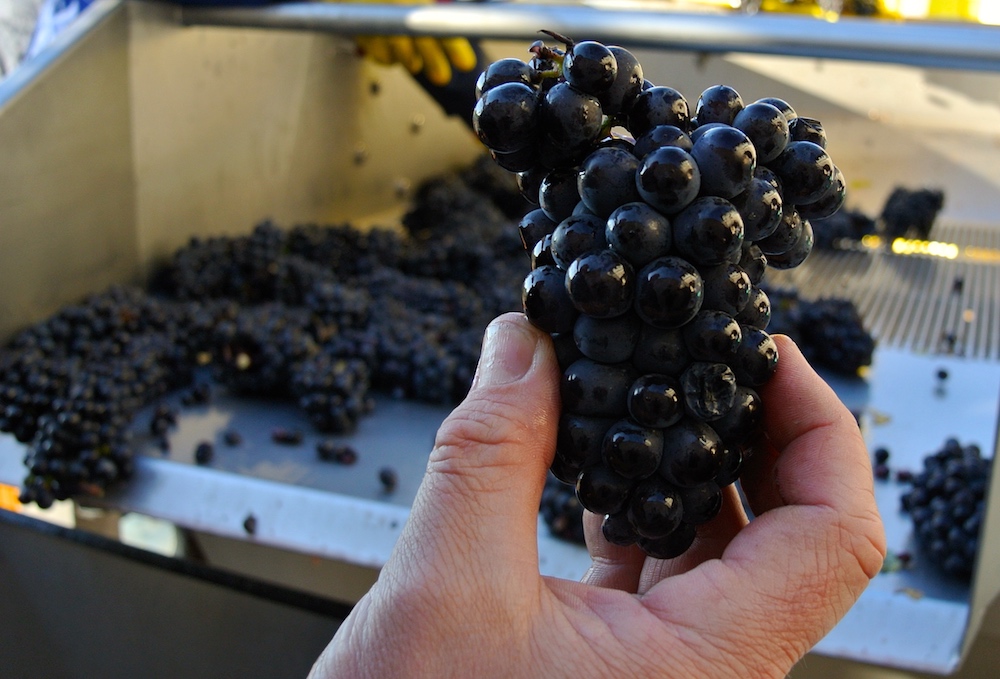
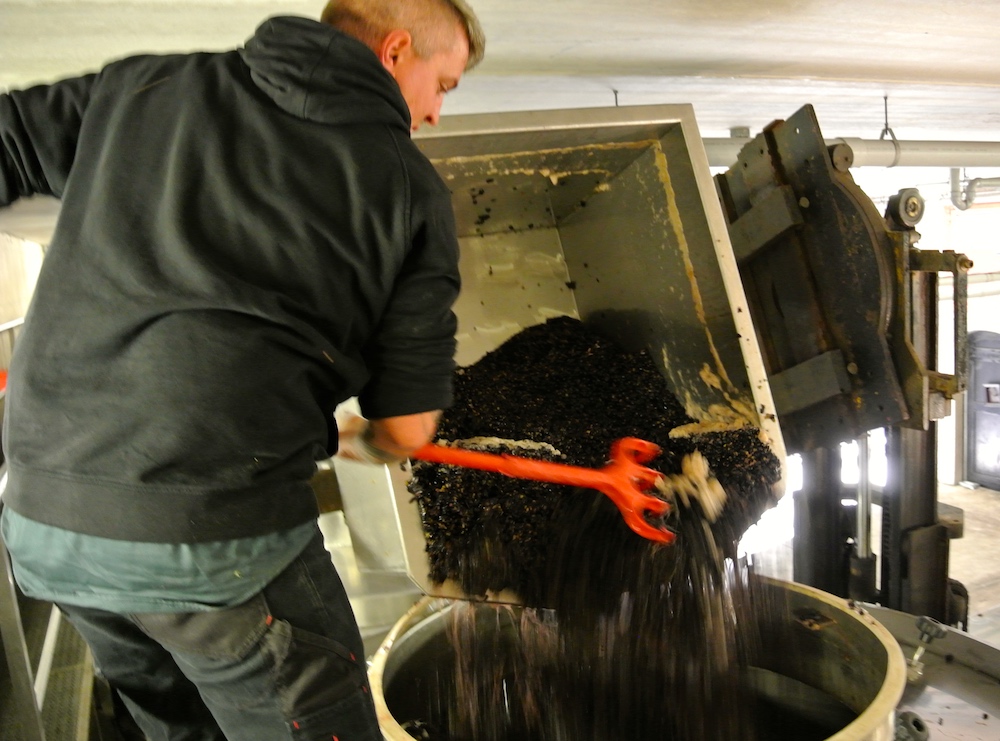
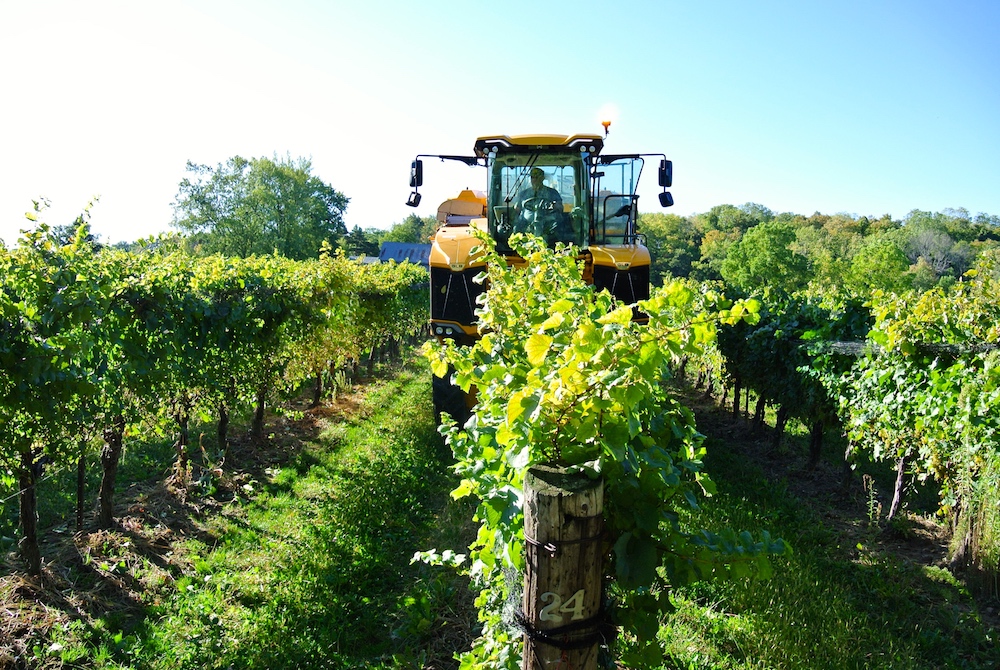
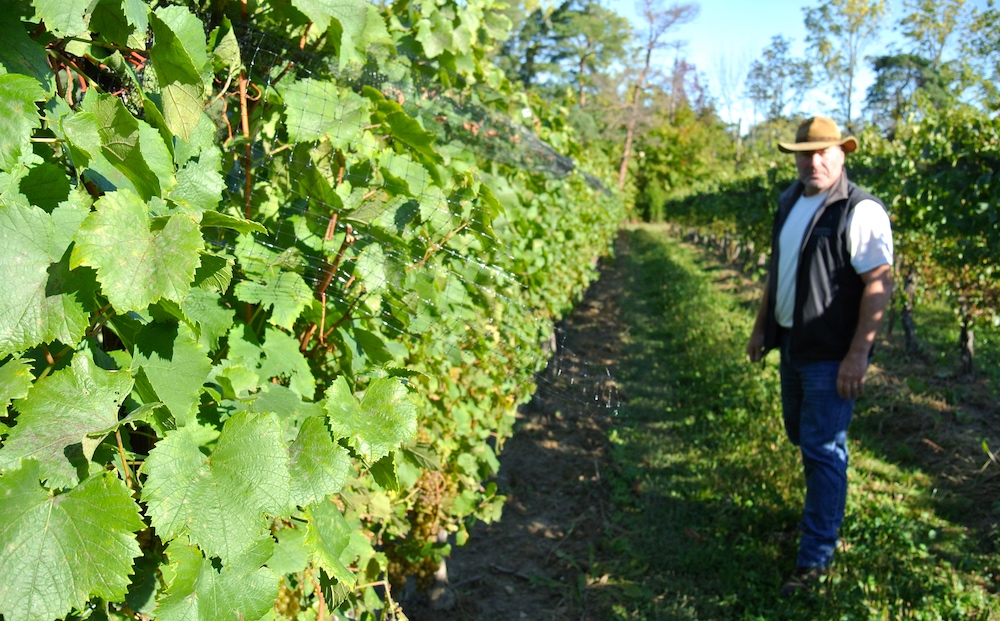
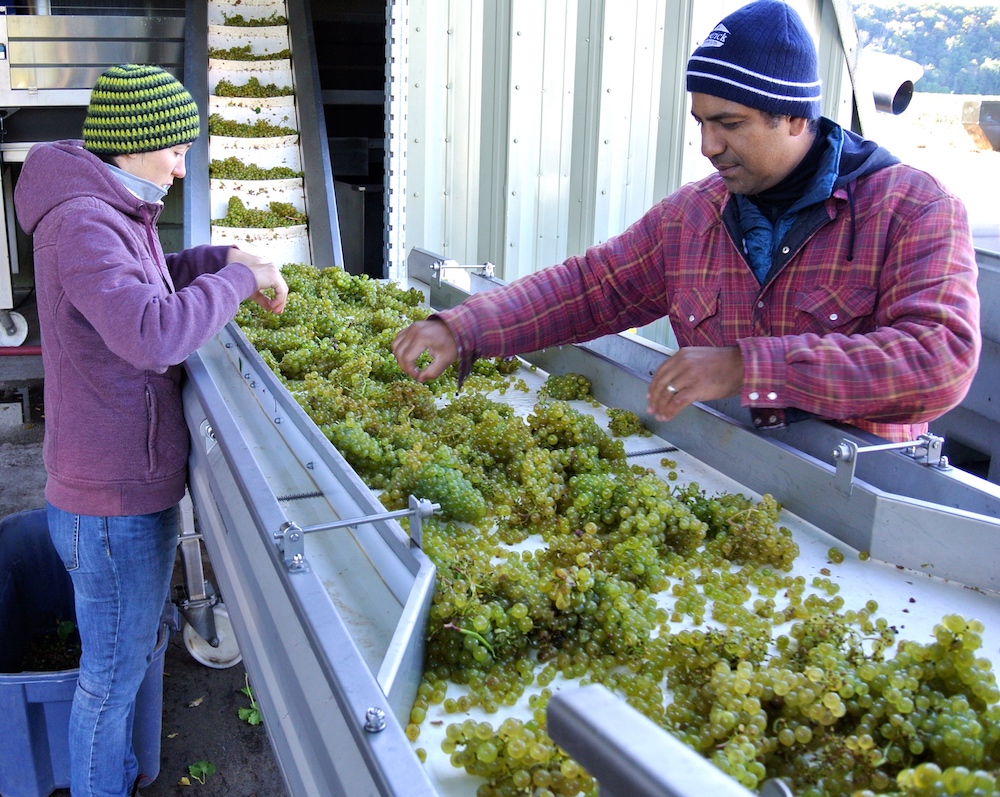
Also in this Ontario Wine Wire report: We highlight Niagara wines being released at Vintages stores Saturday (plus a couple of international wines that caught our eye), we compare a Niagara Riesling (Vineland Estates) to a German Riesling (Leitz) from the same clone, and offer more details on the new VQA logo.
Niagara wines released at
Vintages stores Saturday
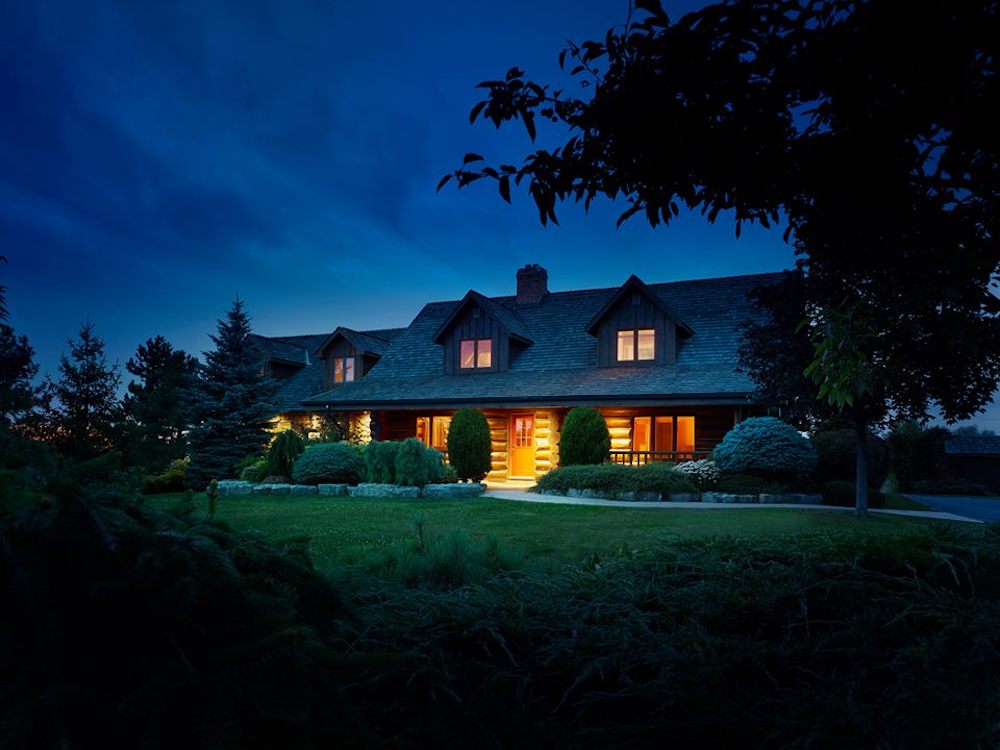
Domaine Queylus Tradition Cabernet Franc 2016 ($28, 91 points) — The fruit is whole berry pressed and has such an enticing nose of wild raspberries, dark cherries, cassis, integrated herbs, iron, subtle spice and red currants. It has lovely mouth-feel, plush tannins, spice, earthy red fruits, integrated herbs and a lovely vein of minerality through the long and finessed finish.
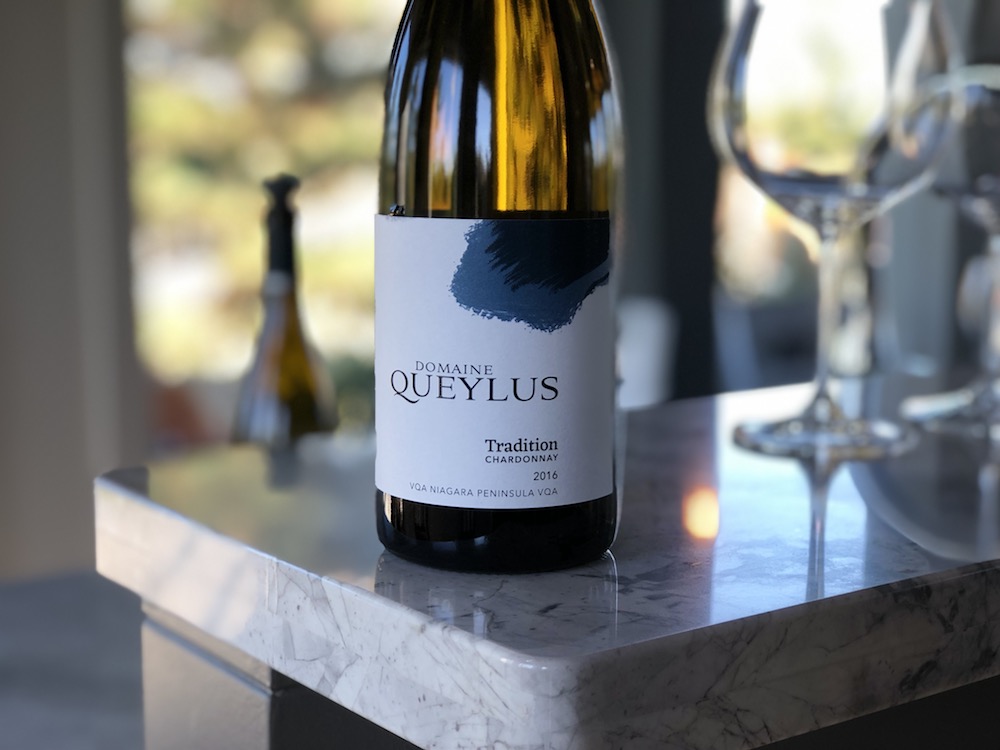
Domaine Queylus Tradition Chardonnay 2016 ($28, 91 points) — What a lovely Chardonnay at an attractive price point. The elegant, graceful nose shows Bosc pear, apple, vanilla toast, touch of citrus, saline and minerality. It’s vibrant and finessed on the palate with ripe stone fruits, integrated oak spices, chalky minerality and a lingering finish.
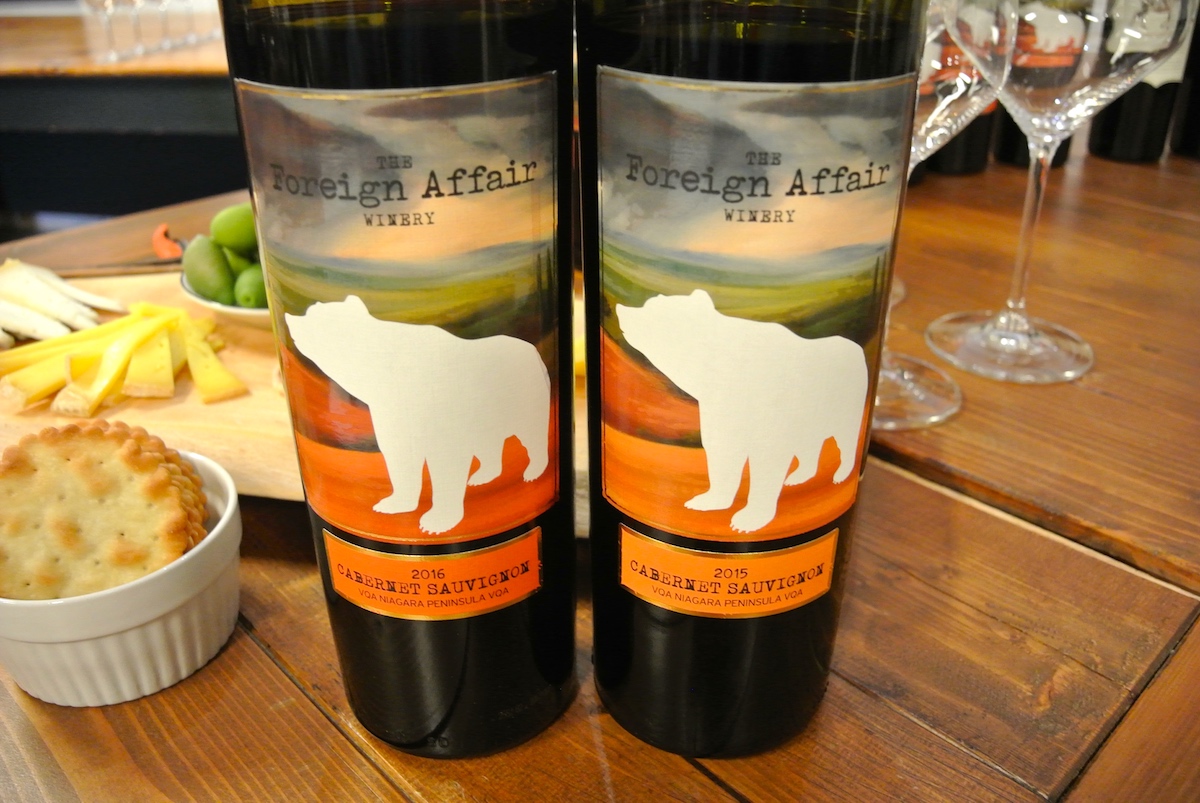
Foreign Affair Cabernet Sauvignon 2015 and 2016 ($40, 89 points) — So, 20% of the fruit is dried for 45 days and the wine is aged for 18 months in American and French oak. The nose displays bright blackberries, savoury red fruits, black cherry, elegant oak spice notes and earthy/meaty notes. It’s quite earthy on the palate with smoky undertones to go with black currants, blackberries, subtle red berries, leather and drying tannins with a highly structured frame. Can cellar 5+ years.
 Cuddy by Tawse Cabernet Merlot 2015 ($28, winery, 90 points) – A fairly complex nose offering up cooked blackberry/cherry with cigar box wood notes and a hint of smoke and earth. Satisfying on the palate with lots of dark, ripe berries and black plum balanced by bright acidity and slightly drying tannins. With decanting, some anise and vanilla begin to show. Very drinkable now. (Review by Michael Lowe)
Cuddy by Tawse Cabernet Merlot 2015 ($28, winery, 90 points) – A fairly complex nose offering up cooked blackberry/cherry with cigar box wood notes and a hint of smoke and earth. Satisfying on the palate with lots of dark, ripe berries and black plum balanced by bright acidity and slightly drying tannins. With decanting, some anise and vanilla begin to show. Very drinkable now. (Review by Michael Lowe)

Featherstone Sauvignon Blanc 2018 ($18, 89 points) — A combination of estate fruit and Jordan Valley Vineyard fruit with 50% of the juice barrel fermented in neutral Canadian oak barriques. This always straddles the two extremes of austere/grassy and ripe tropical fruits. The heat of 2018 brought out the tropical fruits on the nose with added citrus, subtle herbs/grass, grapefruit and kiwi. It’s bright and expressive on the palate with tropical fruits, citrus and underlying herbaceous notes along a bright, vibrant finish.
Also released Saturday, but not reviewed:
• Henry of Pelham Cabernet, Vidal and Riesling Icewine Trio (3 X 200 ML, $100)
• Cave Spring Estate Chardonnay 2017 ($20)
• Henry of Pelham Estate Riesling 2018 ($20)
• Henry of Pelham Speck Family Reserve Chardonnay 2017 ($30)
• Konzelmann Lakefront Series Late Harvest Gewurztraminer 2016 ($16)
• Inniskillin Montague Vineyard Pinot Noir 2016 ($31)
• Redstone Limestone Vineyard Pinot Noir 2013 ($22)
• Southbrook Saunders Family Vineyard Cabernet Franc 2017 ($35)
• The Magician Shiraz/Pinot Noir 2016 ($30)
Flagship stores only
Southbrook Laundry Vineyard Pinot Noir 2016 ($35, 92 points) — The fruit for this Pinot was harvested by hand, wild fermented with 40% whole clusters and aged in older French oak barrels for 17 months. It has a pretty nose of rich, ripe raspberries, sweet cedar, red licorice, bramble/earth and subtle strawberry and spice. It has gorgeous texture on the palate and delicate structure, built on a smooth and silky frame that reveals integrated spice, red fruits in a fresh and finessed style through a long and vibrant finish. Really nice Pinot.
Two whites to consider
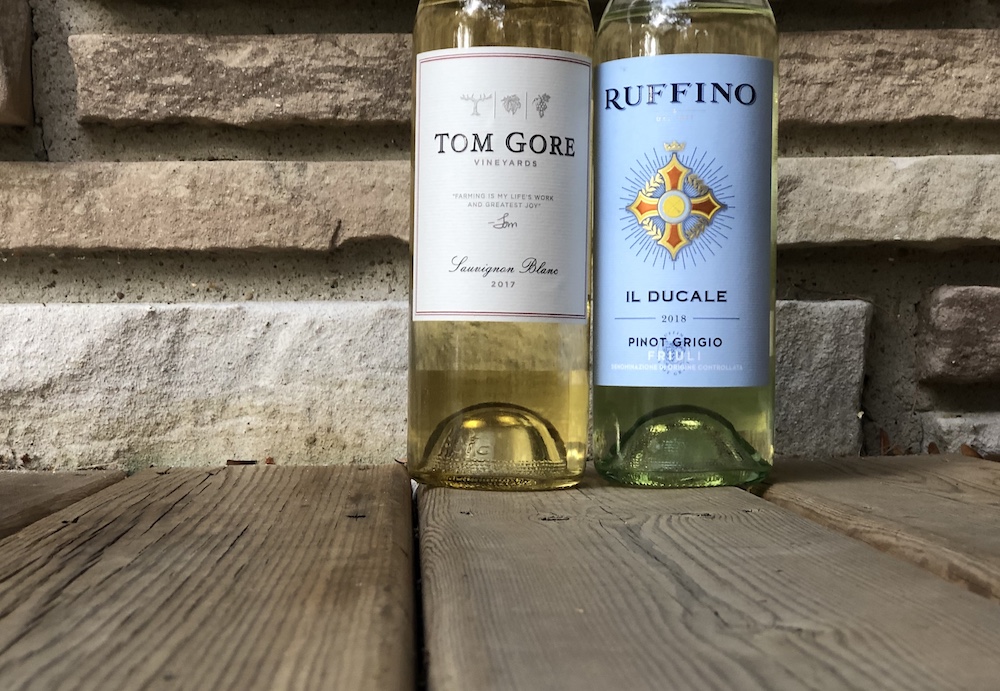
Ruffino Il Ducale Pinot Grigio 2018 ($19, Vintages, 89 points) — Sourced from the Friuli DOC in Italy, this is a nifty Pinot Grigio with a nose of peach, pear, melon, sage and herbs. It’s fresh and expressive on the palate with a range of peach, pineapple, herbs, citrus and a zesty finish.
Tom Gore Sauvignon Blanc 2017 ($20, Vintages, 88 points) — The fruit for this California Sauvignon Blanc is sourced from Central and North Coast vineyards. It has a citrusy profile on the nose with grapefruit, fresh-squeezed lime, tangerine and subtle tropical fruit notes. It’s zesty and fresh on the palate with bright citrus and underlying grassy/herb notes with a crisp, tangy finish.
A new release from Queylus
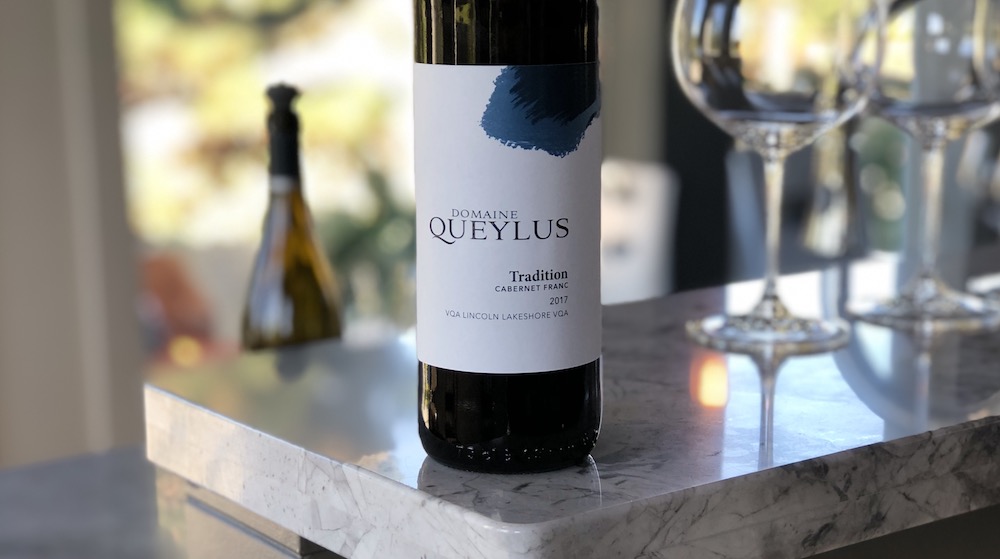
Domaine Queylus Tradition Cabernet Franc 2017 ($28, winery, 90 points) — A lifted floral note to begin, then wild raspberries, crushed red currants, subtle herbs, a deft touch with the oak spices and an air of elegance. Shows a bit more of the savoury/herb notes on the palate to go with rich red fruits, bramble, elegant oak spices and tangy acidity on a smooth finish. Drink now or enjoy 5+ years.
Two Rieslings, Two Regions
Realizing it is not fair to either Niagara or Germany to compare their Rieslings, but I’m going to do it anyway.
I got the idea from Vineland Estates assistant winemaker Tobias Fiebrandt, a German winemaker now in the employ of the Niagara estate on the Twenty Mile Bench. It was at Vineland Estates in 1976, with the assistance of a federal agricultural grant, that the first Riesling was planted on the limestone rich bench land of the Niagara Escarpment. The vines came from Herman Weis, a nurseryman in Germany’s Mosel Valley, using the Weis Clone 21 (or 21b as it’s more commonly called in Canada). The St. Urban Vineyard still thrives today and produces the top Rieslings at Vineland Estates and some of finest Rieslings in Canada.
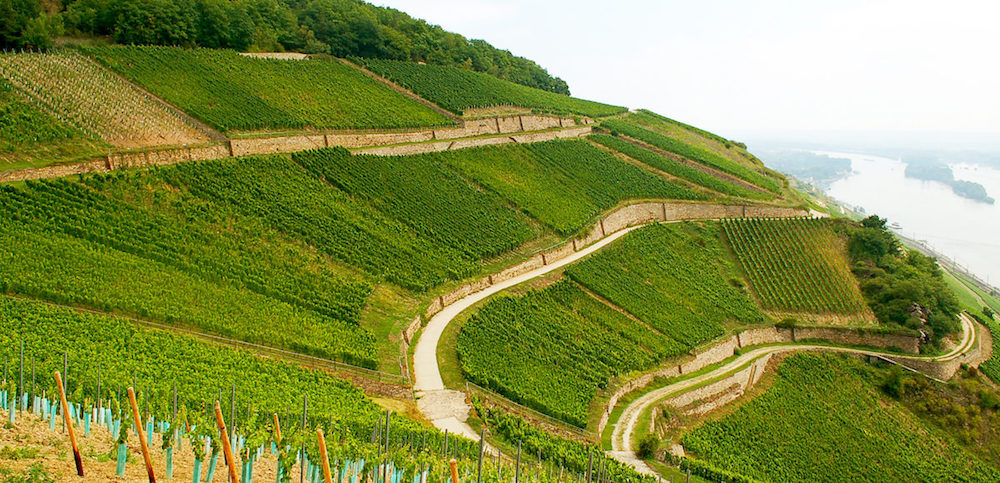
Fiebrandt represents the wines of Leitz (vineyards above) in Ontario and had recommended the Leitz Rheingau Riesling Trocken 2017 (recently released at Vintages stores), considered the estate’s dry, village-level wine for the German producer, as a style of Riesling that would appeal to Niagara Riesling lovers.
Further piquing my interest was a note the controversial wine critic Robert Parker wrote when reviewing an earlier vintage of the Leitz. “A very expressive cool-climate Riesling that gives me an almost Canadian feeling,” he said. I’ve spent my entire wine writing life hearing people describe some Niagara Rieslings as having a “German” feel, yet here’s one of the world’s most influential wine critics describing a German Riesling as having a Canadian feel.
I decided to taste the new upcoming Bo-Teek Riesling (Clone 21, planted in 1992) 2018 beside the Leitz.
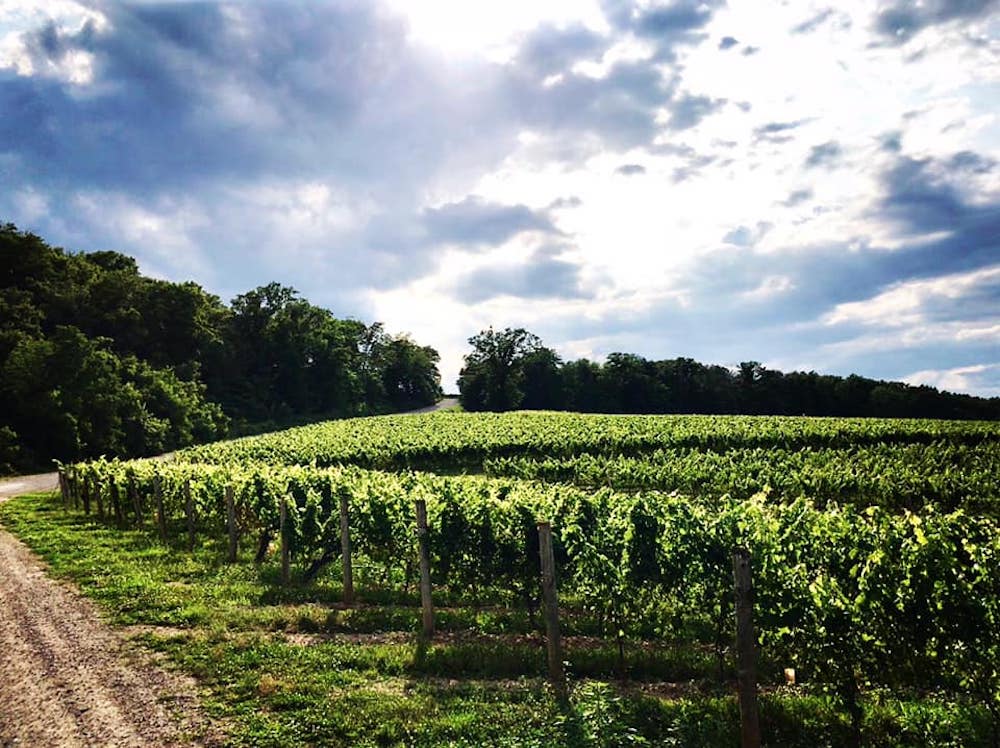
The Bo-Teek Vineyard, above in this photo by Brian Schmidt, is located just across the street from the Vineland Estates and is one of three estate vineyards. The soil is clay with limestone substrate and has a slight grade facing north toward the Lake Ontario slope.
The Leitz Eins-Zwei-Dry Riesling is sourced from sites in the middle and eastern Rheingau, with each parcel having been fermented separately in stainless steel. It’s hard to pinpoint the soil from which this wine is sourced because the Rheingau is a large region with many types of soils, including slate, quartzite, sandstone and gravel.
What we do know about Bo-Teek, limestone plays a big role in the vineyard and imparts profound minerality in the wines grown there.
But, truly, the comparisons we draw from the two wines can only be found in the grape variety, the clone and maybe (but I don’t even know this) some influence on the style from the German assistant winemaker Fiebrandt working in conjunction with head winemaker Brian Schmidt.
Here are my notes for both wines. It’s always fun to compare regions.
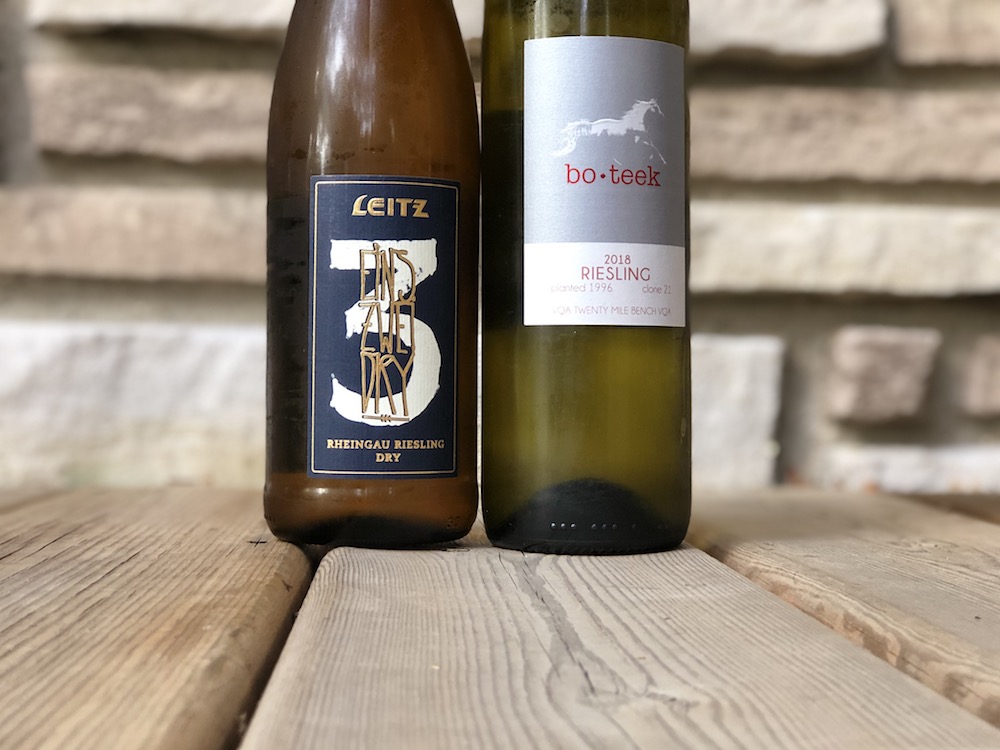
Vineland Estates Bo-Teek Vineyard Riesling 2018 ($20, released in January, 90 points) — So, as mentioned, Clone 21, planted in 1992 in the second of three estate Vineyards, Bo-Teek. A familiar Bench nose of lime, green apple, citrus pith, lemon and waves of wet stone minerality. There are some sweet notes on the palate, but balanced nicely by the racy acidity, with flavours of apple, lime, river-rock minerality and just a pinch of fresh cut peaches. Fresh and vibrant on the finish with only 9% abv.
Leitz Eins-Zwei-Dry Riesling 2017, ($20, Vintages, 89 points) — This super dry Riesling is sourced from sites in the middle and eastern Rheingau, with each parcel having been fermented separately in stainless steel. The nose is bright and expressive with lemon, citrus, salinity and underlying green apple and stony minerality. It’s bracingly dry on the palate and driven by a core of minerality and citrus with subtle lemon pith, salty saline notes and mouth-watering astringency through a vibrant finish. A bit more alcohol in this with 12% abv.
Modernized Ontario VQA
logo tells story of Ontario’s
local wine revolution
Note: Wines in Niagara revealed the new VQA logo on Sept. 10 here). The Wine Marketing Association of Ontario explains in this release sent to WIN the reasons behind the change and how it tied into the recent Tastes Untamed promotion.

The Wine Marketing Association of Ontario (WMAO), in partnership with Ontario’s Wine Appellation Authority (VQAO), reveals the modernized and striking ‘New and Next’ Ontario VQA logo, the emblem used by Ontario VQA wineries as a mark of origin, quality and authenticity.
The VQA logo guarantees that only 100% Ontario grown grapes go into every bottle of Ontario VQA wine. 30 years after the inception of VQA, this new logo expresses how Ontario’s wine region shines brightly on the international wine stage and is a beacon attracting global attention and motivating pride at home.
In several short decades, Ontario’s dynamic wine region has achieved international success and is recognized to be on the leading edge of cool climate wines.
The Ontario wine story began with the vision and perseverance of dedicated pioneers, quickly attracting key believers who joined the industry along the way. Together, Ontario’s growers and winemakers have woven their crafts and created a vibrant local wine industry, rich with exceptional cool climate Ontario VQA wines. Ontario has seen nothing short of a local wine revolution.
“We are thrilled about the new VQA logo as it embraces Ontario’s wine growing region, climate and status as an exciting New World wine destination. It evokes a feeling of boldness and creativity, showcasing how Ontario winemakers have forged their own style. VQA Wines of Ontario are truly on the cutting edge of cool,” said Sylvia Augaitis, Executive Director of the Wine Marketing Association of Ontario.
“Ontario’s time to shine is now and this new contemporary VQA logo communicates confidence, building on how Ontario VQA wines continue to win international respect and acclaim. The modernized VQA logo helps convey that story to consumers.”
The compelling new VQA logo design preserves VQA brand equity in both domestic and export markets and was designed for the changing consumer landscape for wine. True to the promise of VQA’s appellation system, this new logo expresses strong ‘Origin’, Quality’ and ‘Authenticity’ elements, providing assurance to consumers while conveying the excitement for Ontario VQA wines shared across the globe. The Ontario wine industry is looking forward to the roll out of this new logo by wineries and industry partners.
The new VQA logo has been integrated into the ‘Tastes Untamed’ TV, digital and print ads and can also be seen in LCBO stores as part of the ‘Bring Local Home’ fall promotion now running until Thanksgiving.
This month-long promotion highlights the local wine community and focuses on the positive economic impact of purchasing local Ontario VQA wines. Consumers may start seeing this logo on wine bottles immediately, as several early-adopter wineries have added it to labels set to be released in the fall of 2019.
SOURCE: Wine Marketing Association of Ontario


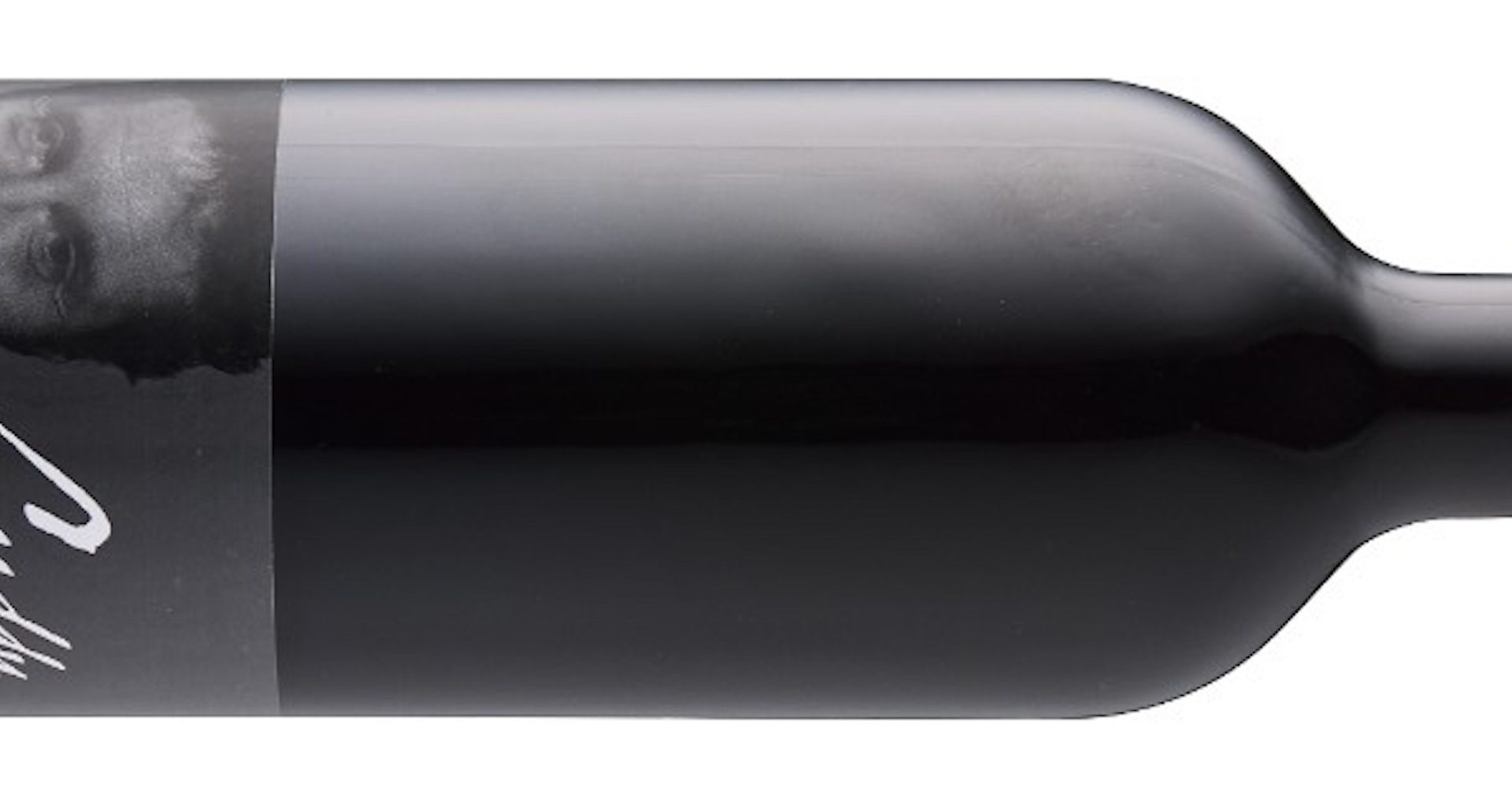






Comment here